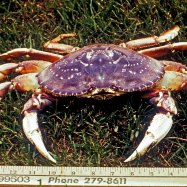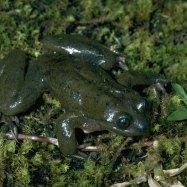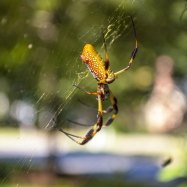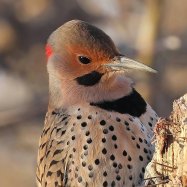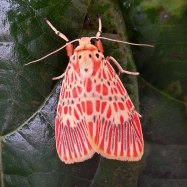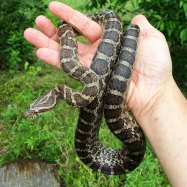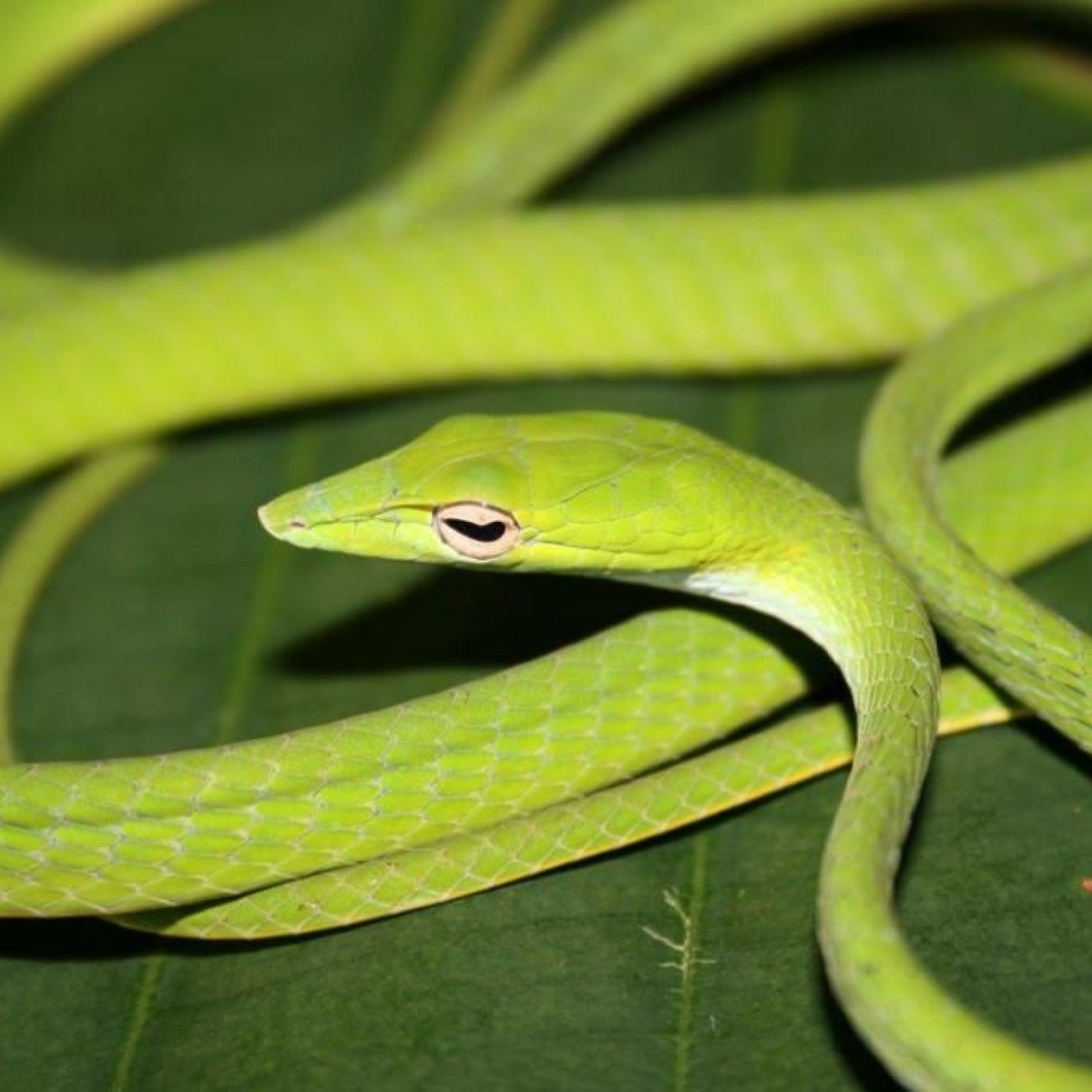
Asian Vine Snake
Average length of 2 to 4 feet (60 to 120 cm)
The Asian Vine Snake, also known as Ahaetulla prasina, is a fascinating creature found in trees and shrubs. With an average length of 2 to 4 feet, this species from the Colubridae family has a long and slender body shape. Its beautiful colors make it a popular choice in the exotic pet trade, but remember to handle these snakes with care as they are mildly venomous.
Animal Details Summary:
Common Name: Asian Vine Snake
Kingdom: Animalia
Habitat: Tropical rainforests, bamboo thickets, and mangrove forests
Cloaked in Green: The Fascinating Life of the Asian Vine Snake
Nature has never ceased to amaze us with its diversity and the Asian Vine Snake is no exception. Also known as Ahaetulla prasina in the scientific community, this enchanting species is renowned for its vibrant green color and unique hunting abilities.Found in the tropical rainforests, bamboo thickets, and mangrove forests of Southeast Asia, including countries like India, Malaysia, Singapore, and Indonesia, the Asian Vine Snake is truly a sight to behold. Let's dive into the deep jungle and explore the fascinating life of this elusive creature Asian Vine Snake.
The Anatomy and Physical Features
Similar to other members of the Colubridae family, the Asian Vine Snake is a slender and agile reptile. Its body shape is long and slender, measuring an average of 2 to 4 feet (60 to 120 cm) in length. The females are usually larger than the males, making them the dominant gender in the species.The most striking feature of the Asian Vine Snake is its coloration. With bright shades of green covering its entire body, the snake is perfectly camouflaged in the trees and shrubs it inhabits. Its belly is white and the body is adorned with black speckles, giving it a striking appearance. These colors not only help it blend in with the surroundings but also serve as a warning to potential predators about its venomous nature.
Habitat and Distribution
The Asian Vine Snake is a tropical species, found in countries like India, Malaysia, Singapore, and Indonesia. While they are distributed widely, they are most commonly found in the thick jungles and can be seen slithering among the tree branches and shrubs Armadillo.Their preferred habitat includes tropical rainforests, bamboo thickets, and mangrove forests. Here, they can easily blend in with the greenery and find plenty of prey to hunt.
Diet and Feeding
As a carnivorous species, the Asian Vine Snake feeds on a variety of small prey, including birds, lizards, frogs, and other small snakes. Thanks to its unique hunting abilities, it has a vast hunting range which primarily includes the trees and shrubs.Unlike other snakes, the Asian Vine Snake is not a constrictor. Instead, it uses its powerful jaws and elongated teeth to capture and hold onto its prey. It is also known to have a specialized hunting technique where it hangs upside down from a branch, waiting for its unsuspecting prey to pass underneath. Once it spots its target, it strikes swiftly, often in a lightning-fast motion, and injects its venom, immobilizing its prey. It then proceeds to swallow the prey whole, using its powerful jaws to crush it into smaller pieces if needed.
Behavior and Adaptation
The Asian Vine Snake is primarily a diurnal species, meaning it is active during the daytime. It is also a solitary creature, often found alone in its chosen habitat. The snakes are known to be excellent climbers, thanks to their elongated bodies and specialized scales on their ventral side that help them grip onto branches and move effortlessly through trees and shrubs.They are also exceptional athletes when it comes to locomotion. Unlike most snakes that move in a slithering motion, the Asian Vine Snake moves in a sideways, back and forth motion to help it navigate through the dense foliage easily. This unique ability allows it to move swiftly and silently, making it almost impossible to spot.
The Venom and Dangers
With its vibrant color and unique hunting abilities, the Asian Vine Snake is no doubt one of the most fascinating creatures in the jungle. However, like all venomous snakes, its venom is dangerous and can be lethal if injected into the bloodstream.Fortunately, the Asian Vine Snake is not a particularly aggressive species and will only bite when provoked or threatened. The good news is that their venom is not very lethal to humans, with only mild symptoms such as pain and swelling at the bite site. However, if left untreated, it can result in nausea, dizziness, and other severe symptoms. Therefore, it is essential to seek medical attention immediately if bitten by this species.
The Conservation Status
Like many other reptile species, the Asian Vine Snake is not classified as endangered or even threatened. However, there is a rising concern for their habitat destruction due to deforestation and urbanization.With their natural habitat shrinking, these snakes are at risk of being displaced and forced to relocate to new, less suitable environments. Therefore, it is crucial to preserve their natural habitat and raise awareness about the importance of these creatures in maintaining the delicate balance of the ecosystem.
Conclusion
The Asian Vine Snake is a truly remarkable species, with unique features and behavior that make it a fascinating subject of study. From its bright green color to its specialized hunting abilities, this elusive snake has captivated the hearts and minds of nature enthusiasts worldwide.As we continue to explore and unravel the secrets of the natural world, it is essential to remember the importance of preserving these species and their habitats. Only then can we ensure that the Asian Vine Snake and other exotic creatures continue to thrive and enchant us with their beauty and mystique for generations to come.

Asian Vine Snake
Animal Details Asian Vine Snake - Scientific Name: Ahaetulla prasina
- Category: Animals A
- Scientific Name: Ahaetulla prasina
- Common Name: Asian Vine Snake
- Kingdom: Animalia
- Phylum: Chordata
- Class: Reptilia
- Order: Squamata
- Family: Colubridae
- Habitat: Tropical rainforests, bamboo thickets, and mangrove forests
- Feeding Method: Carnivorous
- Geographical Distribution: Southeast Asia, including India, Malaysia, Singapore, and Indonesia
- Country of Origin: Multiple
- Location: Trees and shrubs
- Animal Coloration: Green with a white belly and black speckles along the body
- Body Shape: Long and slender
- Length: Average length of 2 to 4 feet (60 to 120 cm)
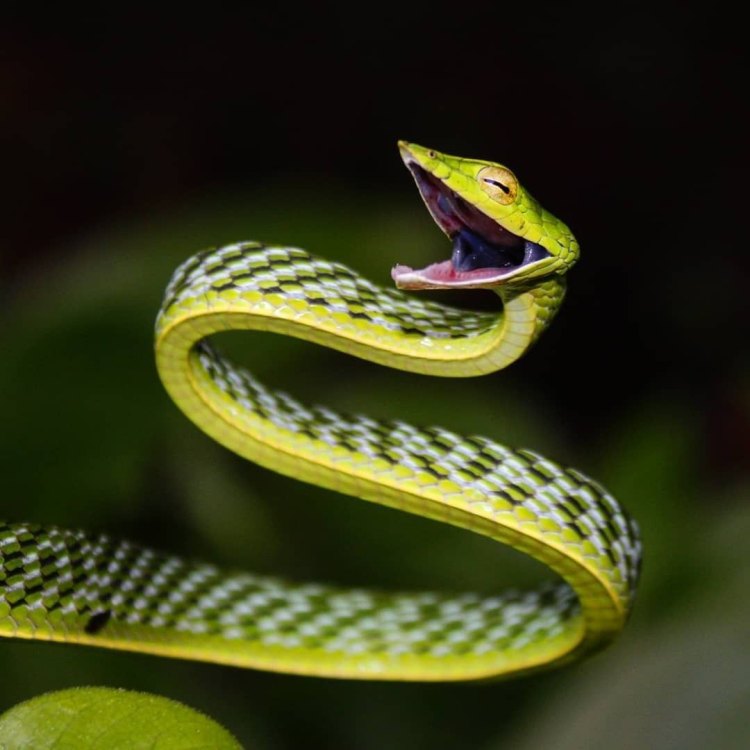
Asian Vine Snake
- Adult Size: Adults can reach up to 5 to 7 feet (150 to 210 cm) in length
- Average Lifespan: Around 10 years
- Reproduction: Oviparous (egg-laying)
- Reproductive Behavior: Females lay eggs in leaf litter or in tree hollows
- Sound or Call: Hissing sound when threatened
- Migration Pattern: Non-migratory
- Social Groups: Solitary
- Behavior: Arboreal (tree-dwelling), mainly diurnal
- Threats: Habitat loss and fragmentation, hunting for the exotic pet trade
- Conservation Status: Not evaluated (IUCN)
- Impact on Ecosystem: Help control populations of prey species
- Human Use: Occasionally kept as exotic pets
- Distinctive Features: Long and slender body, bright green coloration
- Interesting Facts: Can glide through the air by flattening their bodies and launching themselves from one tree to another
- Predator: Birds of prey, larger snakes
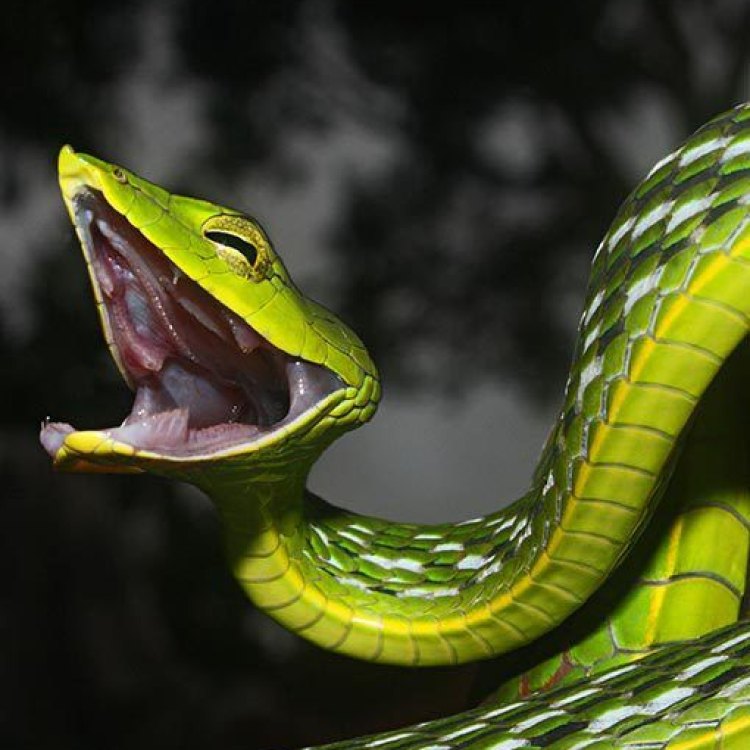
Ahaetulla prasina
The Elegance of the Asian Vine Snake: A Closer Look at its Unique Features
The Asian Vine Snake, also known as the "whip snake" or "long-nosed whip snake," is a fascinating and beautiful species of snake found in the tropical regions of Asia. With its brilliant green coloration, slender body, and distinct behavioral and physical features, it's no wonder that this snake is a popular subject for snake enthusiasts and photographers alike.Let's take a closer look at the Asian Vine Snake and discover what makes it such a unique and interesting creature.
Size and Lifespan
One of the most striking features of the Asian Vine Snake is its size PeaceOfAnimals.Com. Adults can grow up to 5 to 7 feet (150 to 210 cm) in length, making it one of the longest snake species in Asia. However, what makes this snake even more interesting is its slender and delicate body, which gives it a graceful and elegant appearance.The average lifespan of an Asian Vine Snake is around 10 years, although in captivity, they can live longer with proper care and nutrition.
Reproduction and Behavior
The Asian Vine Snake is an egg-laying species, also known as oviparous. Female snakes lay their eggs in leaf litter or tree hollows, where the eggs are protected from predators and the elements. The eggs take around 3 months to hatch, and the baby snakes emerge fully independent and equipped to hunt for their own food.In terms of behavior, the Asian Vine Snake is arboreal, which means that it mainly lives and hunts in trees. This also makes it a diurnal species, meaning it is most active during the day. Its slender body and strong grip allow it to effortlessly glide from one branch to another, making it a skillful and agile climber Archelon Turtle.
Social Groups
Unlike other snake species that may live and hunt in groups, the Asian Vine Snake is a solitary creature. It prefers to live and hunt alone, only coming into contact with other snakes during the breeding season.Threats and Conservation Status
Unfortunately, the Asian Vine Snake faces a variety of threats in its natural habitat. The main threat is habitat loss and fragmentation due to human activities, such as deforestation for agriculture and urbanization. This has greatly reduced the snake's natural range and has led to a decline in its population. Another threat to the Asian Vine Snake is hunting for the exotic pet trade. Due to its unique features, this snake is often sought after as an exotic pet, leading to its capture and removal from the wild.Currently, the Asian Vine Snake is listed as "Not Evaluated" by the International Union for Conservation of Nature (IUCN). This means that there is not enough data to determine the conservation status of this species. However, with the continued destruction of its habitat and high demand for the exotic pet trade, it is vital that conservation efforts are implemented to protect this species from further decline.
Impact on the Ecosystem
Like most snake species, the Asian Vine Snake plays an important role in its ecosystem. Being a predator, it helps control the populations of its prey species, which can help maintain a healthy and balanced ecosystem. However, with declining numbers, the absence of these snakes can have a domino effect on the ecosystem, leading to an increase in prey populations and a disruption of the natural balance.Human Use
Despite being listed as a species of "Least Concern" in terms of conservation, the Asian Vine Snake is occasionally kept as an exotic pet. However, this practice is highly discouraged as it contributes to the decline of the species in the wild and often leads to poor living conditions for the snake. It's important to remember that wild animals belong in their natural habitats and not in captivity as pets.Distinctive Features and Interesting Facts
The Asian Vine Snake has some unique and fascinating features that make it stand out from other snakes. Its long and slender body, along with its bright green coloration, gives it a striking appearance. This coloration serves as camouflage, helping the snake blend in with its surroundings and stay hidden from predators.One of the most interesting facts about the Asian Vine Snake is its ability to glide through the air. It does this by flattening its body and launching itself from one tree to another, similar to a flying squirrel. This behavior not only helps it move from one location to another but also allows it to surprise its prey from above.
Predators
Despite its impressive size, the Asian Vine Snake is not immune to predators. Larger snakes, such as cobras and pythons, are known to prey on this species. However, its most common predators are birds of prey, such as hawks, who can easily swoop down and catch a snake in flight.In Conclusion, the Asian Vine Snake is a remarkable and unique species of snake that deserves our attention and protection. From its graceful and slender body to its vibrant green coloration and impressive gliding abilities, this snake is truly a marvel of nature. To ensure its survival, it's crucial that we take steps to protect its natural habitat and discourage the exotic pet trade. Let's continue to appreciate the beauty of this snake while also working towards preserving its place in the ecosystem for generations to come.
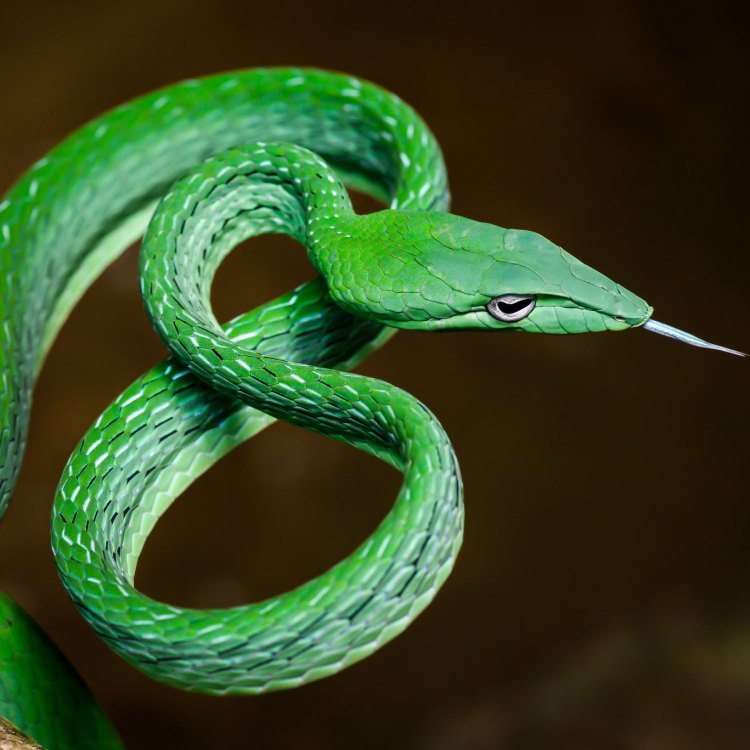
Cloaked in Green: The Fascinating Life of the Asian Vine Snake
Disclaimer: The content provided is for informational purposes only. We cannot guarantee the accuracy of the information on this page 100%. All information provided here may change without prior notice.



